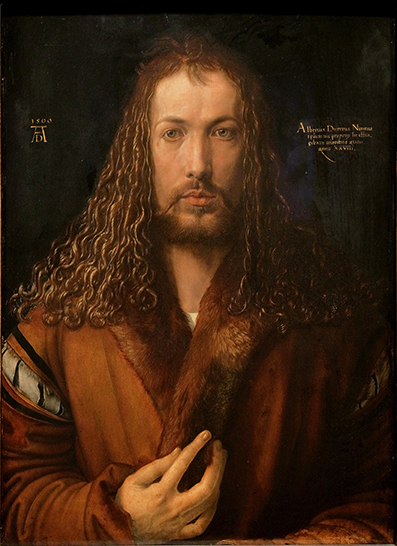

Self-portraits serve many purposes above and beyond building careers. When portrait photography also gained popularity, the images were used to make the photographer competitive by demonstrating his or her ability to capture a flattering likeness.
#SELF PORTRAITURE PROFESSIONAL#
They were a form of advertising, the photographer posing with a camera or a set of photographs, that showed him as a professional of his trade. The creation of blood and bones.Įarly self-portraits like these became popular among photographers. On the back of it he wrote, “The first light Picture ever taken. Cornelius set his camera up at the back of his family’s store in Philadelphia and took the image by removing the lens cap and then running into frame, where he sat for a minute before covering up the lens again. The first-ever self-portrait photograph is believed to be a daguerreotype shot by a US metal worker, amateur chemist, and photography buff called Robert Cornelius, in 1839. “Being able to give young people the tools to explore their own experiences and create meaningful work has been one of the biggest joys of my career thus far,” she states. Kiaba’s work has been exhibited internationally and has also given her the opportunity to begin teaching in an arts program for at-risk youth. The self-portraits in her favourite series, Burdens of a White Dress, refer to her experience growing up in the cult, but also the struggle she went through in trying to find her way out of a forced arranged marriage within the religious movement. It was only when I began to step in front of the camera, however, that the work truly became powerful and meaningful to me.” Eventually, though, the need to express and explore became paramount and I began to create work that directly addressed those experiences. Perhaps I was afraid of what I might find, and the burden of confronting the demons of years past. “But for many years I was afraid to turn the lens on myself. Kiaba began taking photographs to try to make sense of her world. Since extricating myself from the group in my late teens, it has been a long road to healing and rewiring my mind in an attempt to undo the damage of the cult.” © Juliette Jourdain.

That experience warped my perspective on what it meant to be a woman and what my inherent value was. “I was born into one of the most notorious cults of the ‘70s and ‘80s in the United States - the Unification Church. I use it to peer into my psyche, and to begin to unravel the inner workings there,” she says. “Self-portraiture, for me, is a tool for self-exploration. The story of Jennifer Kiaba is one of the more striking examples of this. This is not to say that self-portraits make you famous, but that creators have been representing themselves in their art for a very long time.

So are Surrealism artists, Man Ray and Salvador Dali.
#SELF PORTRAITURE FULL#
You can read Pittaway’s full craft essay here.Vincent van Gogh created a collection of 50 self-portraits, albeit painted.
#SELF PORTRAITURE SERIES#
Are you Caravaggio holding the lantern? The short-order cook at the Greensboro Sit-In? The kid behind the kid who caught a World Series home run baseball? Be as true to you as you can be: What do you see of yourself in this imagined scene that you might miss revealing in a more factual moment? Wish I’d been there: What moment in history would you most like to have witnessed? Research the scene-and then place yourself in it, but at its fringes. Now step back and describe yourself as each of them sees you. Who’s in your group? If you were to paint a group self-portrait of you at 17, who else would be in the frame? Describe them-both the real people and the influential figures who loomed large (your Virgin Marys).

What insights might a stranger discovering your collection draw from these photos? What catches your eye? Throughout a day or a weekend, snap images of where your gaze settles: the irritating scuff on the white-painted stair riser heading up to your bedroom the dog’s wagging tale as its dream delights it the way the water pools on the barbecue lid in the rain. Her essay includes links and examples, and a series of excellent, unusual prompts such as: Our new issue includes a fascinating Craft Essay from author Kim Pittaway exploring the need to convey depth and shadow when writing the self, how “a slimly pen-stroked ‘I’ isn’t a portrait,” and what we can learn from visual artists and self-portraiture.


 0 kommentar(er)
0 kommentar(er)
